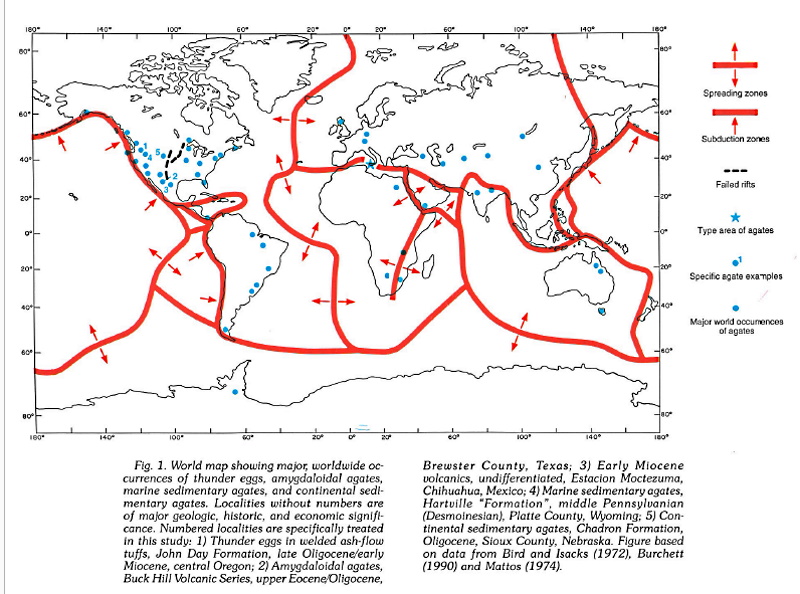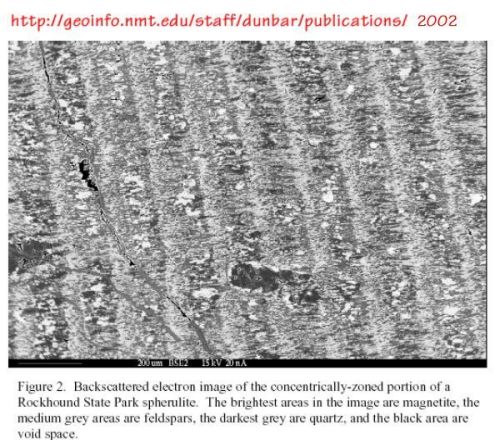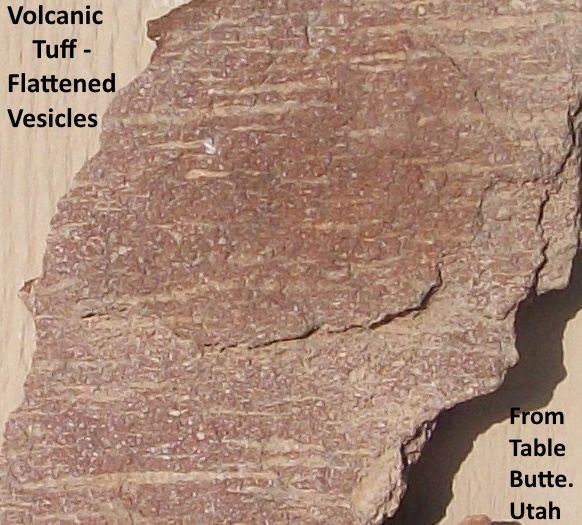|
|
Post by 1dave on Jan 30, 2023 3:18:23 GMT -5
Download Here: digitalcommons.unl.edu/cgi/viewcontent.cgi?article=1408&context=conservationsurvey Roger K. Pabian is an interesting person, in 2005 he wrote: friendsofmineralogycolorado.org/wp-content/uploads/2016/10/2005_FMCC_Agate_Symposium.pdf“Biologic crises and mass extinctions---The Lake Superior agate that formed in place in volcanic rocks of late Precambrian age are an example of an abundant, widespread occurrence of agates that takes place at about the same time in the earth’s history that there is a considerable change in faunas. During this time, the primitive Ediacaran faunas are giving way to the shelly faunas of the early Cambrian. During the Devonian, the abundant agate resources of Scotland formed at about the same time faunas changed from early to late Paleozoic constituencies. The colonial animals, primitive mollusks and trilobites gave way to echinoderm rich fauna, goniatite mollusks, and many trilobite families perished. Many of the world’s largest agate occurrences are found the Permian-Triassic boundary, the greatest mass extinction of all time. Many of the agates of Brazil, Germany, Poland, Australia, and South Africa all are products of this time. Agate formation continued on into the Triassic as evidenced by extensive deposits along the eastern seaboard of the US, starting in about North Carolina, and extending northeastward into New Brunswick and Nova Scotia in Canada. The extensive agate deposits of India are related to the Deccan basalts of late Cretaceous age (Bose, 1908-1909, Officer and Drake, 1985), flows that some researchers think were caused by the late Cretaceous impact that brought about the demise of dinosaurs, ammonites, and hundreds of species of foraminifers. Abundant agate deposits in the Miocene of Texas and or Oregon came about at about the same time as important changes in both terrestrial and marine faunas.” - Roger K. Pabian |
|
|
|
Post by jasoninsd on Jan 30, 2023 8:55:50 GMT -5
Dave thanks for posting this! I liked pages 18-19 which have great diagrams! And of course there's a killer Dryhead Agate on page 27!  |
|
|
|
Post by 1dave on Jan 30, 2023 10:38:43 GMT -5
From the book: (all the numbered localities are in the western US - the only star is for the Achates River in Sicily)  |
|
hoolligan1938
spending too much on rocks
 
Member since January 2022
Posts: 253
|
Post by hoolligan1938 on Jan 30, 2023 17:44:17 GMT -5
I may have missed this in scanning the posting but is this book still available? I noticed one date of 1994 but was not sure if the book is available.
Jim
|
|
gemfeller
Cave Dweller 
Member since June 2011
Posts: 3,768 
|
Post by gemfeller on Jan 30, 2023 18:11:41 GMT -5
I find his chronology of agate formation especially interesting. I've often wondered what and how many mineral and lapidary wonders formed in the past and have been ground to dust and turned into sediment by numerous mountain-making/erosional cycles over the past billions of years. Even rocks don't last forever.
|
|
|
|
Post by 1dave on Jan 30, 2023 18:24:35 GMT -5
I may have missed this in scanning the posting but is this book still available? I noticed one date of 1994 but was not sure if the book is available. Jim Jim, use the TOP link to download for free your own personal copy! |
|
|
|
Post by liveoak on Jan 30, 2023 19:31:28 GMT -5
Thanks Dave Downloaded & will check it out
Patty
|
|
|
|
Post by 1dave on Jan 30, 2023 23:13:11 GMT -5
Too bad it is photoed pages instead of a regular PDF, but the images are fantastic. My only disagreement is they are convinced that thundereggs developed in ash fall tuffs as feldspars. That is not possible. Thundereggs indisputably formed as multi layered cristobalite needles separated by feldspar coatings crystal spheres. NOT feldspars. That requires lots of movement, time and high temperatures not available after an ash flow tuff is in place.  IF the needles were to get in place, how would the water get into the mashed flat layer to explode the needles apart? No, it just doesn't work. I have found thundereggs in ash flow tuffs, but they had to form in the magma chamber long before eruption! The bond energy of 621.7 kJ/mol explains how the spheres stayed together during flight. Remember they were in the middle of a high pressure explosive cloud. any near the edge with low pressure would explode like hand grenades and all trace of them lost in the chaos. Those that survived were mashed flat along with steam vessels etc.that surrounded them.   |
|
khara
fully equipped rock polisher
  
Member since September 2022
Posts: 1,707
|
Post by khara on Jan 30, 2023 23:22:10 GMT -5
Ugh, school is wasted on the young. I wish I had time and money to just sit in science class all day! Thanks Dave for the book!
|
|


















